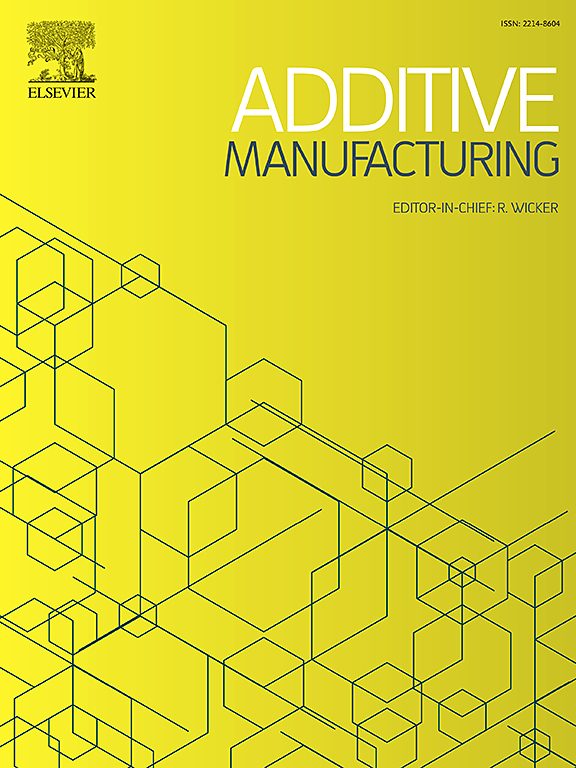Influence of architecture and temperature on the critical strain for serrated flow in additively manufactured Inconel 718 lattices
IF 10.3
1区 工程技术
Q1 ENGINEERING, MANUFACTURING
引用次数: 0
Abstract
This work aims to investigate the influence of architecture and testing temperature (T) on the critical strain for serrated flow (εc) in Inconel 718 additively manufactured lattices. Three BCC lattices with different strut and cell dimensions were fabricated by laser powder bed fusion (LPBF) and they were tested in uniaxial compression at 25, 300, 450 and 600°C at an initial strain rate of 10−3 s−1. Serrated flow was observed in the three BCC lattices at T ≥ 300 °C and εc was measured for each lattice architecture and temperature. At a fixed T εc is inversely proportional to the lattice relative density and for each investigated lattice architecture εc exhibits the lowest value at 450°C. Finite element modeling (FEM) was utilized to calculate the local stress distributions during uniaxial compression of the BCC lattices, revealing that the onset of serrated flow requires an activation volume fraction of material (Vf*) to be subjected to a local stress exceeding a threshold stress (σth). The values of Vf* and σth at 300, 450 and 600°C were calculated from the FEM simulations of the BCC lattices and they were used to accurately predict εc in an LPBF-manufactured FCCXYZ lattice at similar testing conditions. Our results suggest that the inverse relationship between εc and the lattice relative density is explained by the fact that lighter lattices require higher nominal strains to reach Vf*. Conversely, the variation of εc with temperature is attributed to changes in Vf*, as σth remains essentially constant at the investigated temperatures.
求助全文
约1分钟内获得全文
求助全文
来源期刊

Additive manufacturing
Materials Science-General Materials Science
CiteScore
19.80
自引率
12.70%
发文量
648
审稿时长
35 days
期刊介绍:
Additive Manufacturing stands as a peer-reviewed journal dedicated to delivering high-quality research papers and reviews in the field of additive manufacturing, serving both academia and industry leaders. The journal's objective is to recognize the innovative essence of additive manufacturing and its diverse applications, providing a comprehensive overview of current developments and future prospects.
The transformative potential of additive manufacturing technologies in product design and manufacturing is poised to disrupt traditional approaches. In response to this paradigm shift, a distinctive and comprehensive publication outlet was essential. Additive Manufacturing fulfills this need, offering a platform for engineers, materials scientists, and practitioners across academia and various industries to document and share innovations in these evolving technologies.
 求助内容:
求助内容: 应助结果提醒方式:
应助结果提醒方式:


